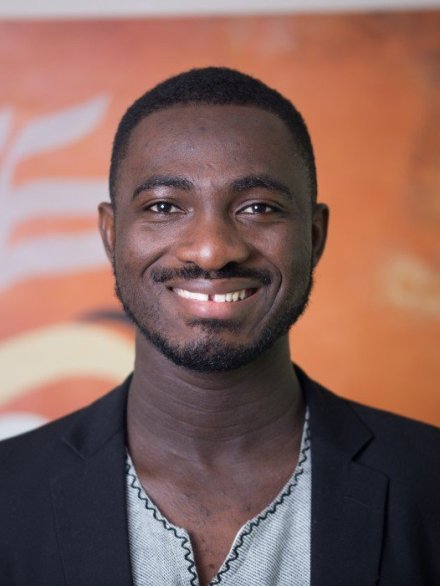35 Innovators Under 35. MIT Technology Review
Isaac Sesi built a gadget he believes can tackle one of the biggest risks faced by farmers across Africa: the contamination of grains following harvest.
Sesi’s product, GrainMate, allows famers and grain purchasers to affordably measure moisture levels of maize, rice, wheat, millet, sorghum, and other staples. It’s designed for a simple yet persistent problem: according to the UN Food and Agriculture Organization, more than 20% of sub--Saharan Africa’s cereal output is lost or wasted, often because grains aren’t dried sufficiently before they’re stored. Grain stored while moist can develop aflatoxins—contaminants produced by fungi that are harmful to humans and animals.
In Sesi’s native Ghana, individual farmers often sell their harvests to aggregators or animal feed producers; if one farmer’s crops are too moist they risk spoiling the entire batch. Although imported moisture detection devices are available, few farmers in Ghana can afford the nearly $400 price tag. “That might be half of what a farmer is making from his entire field” per harvest, Sesi says.

A United States Agency for International Development project operating in partnership with his school, the Kwame Nkrumah University of Science and Technology, had recently designed a grain-moisture meter for the local market. But it wanted to bring the cost down and find a way to produce the device in Ghana.
Sesi was their man: with the help of a small team, he streamlined the original device, redesigned its circuit board, built an accompanying mobile app, and found five Ghanaian subcontractors to make components that had previously been sourced from China. Sesi’s device sells for $80—less than one-fourth as much as existing alternatives. Sesi and his team are now developing a more efficient version of the meter and a second product to help farmers identify ideal soil inputs. They’re also raising funds to expand to the bigger markets in Kenya and Nigeria. Ultimately, Sesi believes he can help farmers across the continent cut wastage, minimize economic losses, and improve the safety of their products.
Sesi’s product, GrainMate, allows famers and grain purchasers to affordably measure moisture levels of maize, rice, wheat, millet, sorghum, and other staples. It’s designed for a simple yet persistent problem: according to the UN Food and Agriculture Organization, more than 20% of sub--Saharan Africa’s cereal output is lost or wasted, often because grains aren’t dried sufficiently before they’re stored. Grain stored while moist can develop aflatoxins—contaminants produced by fungi that are harmful to humans and animals.
In Sesi’s native Ghana, individual farmers often sell their harvests to aggregators or animal feed producers; if one farmer’s crops are too moist they risk spoiling the entire batch. Although imported moisture detection devices are available, few farmers in Ghana can afford the nearly $400 price tag. “That might be half of what a farmer is making from his entire field” per harvest, Sesi says.

- Sesi, who grew up without electricity or running water and often went to school hungry, spent much of his childhood tinkering with electronic devices.
- He learned by dissecting broken radios and other abandoned gadgets with the help of a book from his school library.
- He long sought a way to apply that passion to a field that could have a social impact—and in 2017, as a recent electrical engineering graduate, he got his chance.
A United States Agency for International Development project operating in partnership with his school, the Kwame Nkrumah University of Science and Technology, had recently designed a grain-moisture meter for the local market. But it wanted to bring the cost down and find a way to produce the device in Ghana.
Sesi was their man: with the help of a small team, he streamlined the original device, redesigned its circuit board, built an accompanying mobile app, and found five Ghanaian subcontractors to make components that had previously been sourced from China. Sesi’s device sells for $80—less than one-fourth as much as existing alternatives. Sesi and his team are now developing a more efficient version of the meter and a second product to help farmers identify ideal soil inputs. They’re also raising funds to expand to the bigger markets in Kenya and Nigeria. Ultimately, Sesi believes he can help farmers across the continent cut wastage, minimize economic losses, and improve the safety of their products.


No comments:
Post a Comment